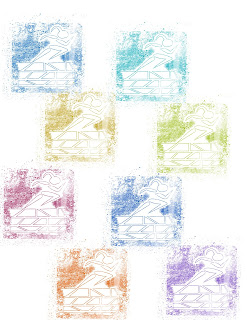All our generation has known is the digital age. Most of us had a computer either in our house or in our school, as a matter of a fact, being technologically literate was worked into generation z's elementary curriculum. Even though generation z is considered to be composed of "digital natives" we were not around for the true genesis of the computer let alone the internet or the world wide web. Most people my age would consider those two things the same but they are two different entities.
The Internet is a means for a network of computers, whether side by side or distanced by thousands of miles, to be able to communicate with one another and exchange data and information. In its most simple terms, it's a collection of wires, cables, routers, satellites, and wifi towers that allow for communication all over the world. The first workable prototype of the Internet was funded by the Department of Defense and labeled Advanced Research Projects Agency Network. The first message sent from a computer at UCLA to a computer at Stanford crashed the system. The technology continued to grow and in the 1970s, scientists Robert Kahn and Vinton Cerf developed Transmission Control Protocol and Internet Protocol which set standards for how data could be transmitted. According to Cisco, a US technology firm, 77% of consumer internet traffic was derived from video streaming and watching in 2018.
While the Internet is a way for computers and users to communicate and transfer data, the world wide web is different in that it is a database service rather than a communication line. The Web gives users practically unlimited access to any and all documented information and data. The Web operates within servers that store and transmit documents to other computers when requested. The technology was first developed in 1989 by Tim Berners-Lee at CERN with the creation of HyperText Transfer Protocol, and this text-based web-browser was made available to consumers in January 1992. The Web developed as the decade went on with the release of Mosaic, the introduction of personal computers (PCs), Internet Explorer by Microsoft, and Safari by Apple. In the 21st century, internet usage was made more available on smartphone, Web usage experienced a steady increase and now accounts for more than half of web browsing usage.
The world wide web, or web for short, are the pages you see when you're on a device and you're online.
But the internet is the network of connected computers that the web works on, as well as what emails and files travel across. Many people use these terms interchangeably because both refer to online usage but different components that carry out seemingly one action, or one click. The web is where the information and data are housed but the transfer and reception of data are completed through the network created by the internet. Both components work together at lightning speed to perform the now basic task of a google search or sending an email.

It's unbelievable to think that the never-ending mass of websites and information available online wasn't there just 20 years ago. The first webpage was published on August 6th, 1991and it was designed by Tim Berners-Lee and dedicated to information on the World Wide Web Project, fittingly. The website outlined how to create Web pages and explained hypertext, which is the language used in that particular web browser. The site is still up and seems to not have been updated since 1992. Here is the URL:
http://info.cern.ch/hypertext/WWW/TheProject.htmlAndrews, Evan. “Who Invented the Internet?” History.com, A&E Television Networks, 18 Dec. 2013, www.history.com/news/who-invented-the-internet.
Sample, Ian. “What Is the Internet? 13 Key Questions Answered.” The Guardian, Guardian News and Media, 22 Oct. 2018, www.theguardian.com/technology/2018/oct/22/what-is-the-internet-13-key-questions-answered.
“World Wide Web.” Encyclopædia Britannica, Encyclopædia Britannica, Inc., www.britannica.com/topic/World-Wide-Web.







Comments
Post a Comment